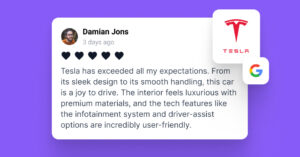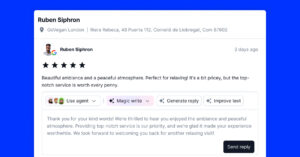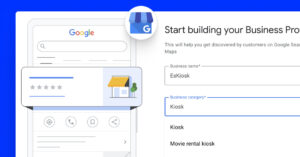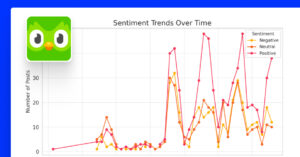Companies are moving away from collecting third-party data. Google has stated that third-party cookies will no longer be used in Chrome by the end of 2023, joining a growing list of browsers that have abandoned the infamous tracking technique of gathering users’ online data.
Due to this reason and the growing privacy concerns, first-party data is becoming more relevant. Companies may comply with rules more easily by collecting their own data. Users often agree to have their data processed when they purchase from your organization and become actual customers. And especially when they become loyal customers, it is much easier for them to share their customer feedback proactively.
First-party data is also necessary for businesses to provide a tailored experience to their consumers. The first-party audience may be targeted based on demographics, interests, and buying intentions.
Moreover, owning first-party data can eliminate the need to collect other sorts of data. In this article, we’ll look at why first-party data is an essential tool for every marketer who wants to have successful customer relationship management in a fast-paced and highly competitive tech landscape.
What is first-party data?
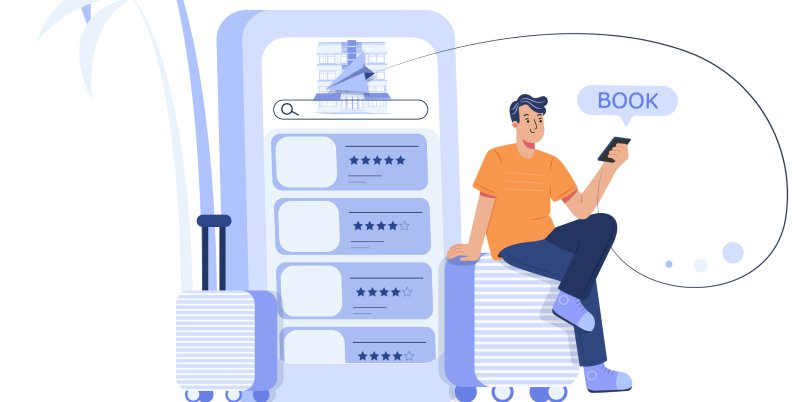
The data that a company collects directly from users is called first-party data (1P data).
This data may be gathered through a combination of online and offline data points such as mobile apps, websites, social media, and questionnaires.
Your company owns this data, and if customers properly opted in and agreed to be further processed, they can use it to develop content, ads, and personalized experiences.
First-party data can enable marketers to augment data and fill in the blanks in user profiles. Organizations may develop user groups and offer tailored advertising to visitors who leave their website.
It’s a solid tool for gathering customer feedback and audience insights so that you can improve marketing efforts with a customized experience.
Simply put, marketers gather first-party data to get to know their users better. Unlike data collected through external tools, which can often be unreliable, first-party data is more valuable because the contact between the company and the user is without mediators.
For example, you get first-party data from monitoring the in-app behavior of your users. Or, you can send out surveys that your customers answer directly, and all the user information submitted in the survey is considered as first-party data.
And finally, one of the most popular data collection practices is web forms where brands collect contact information to have control over the communication channel with their customers.
Let’s see how it differs from second-party and third-party data to understand first-party data better. We’ll examine four factors:
- Data source
- Data reliability
- Ability to target
- Examples
First-party data vs. second-party data
- Data source: Unlike first-party data, which comes directly from customers, second-party data comes from a reliable source. To put it simply, this is the first-party data of another company. You can agree with this company to use their data if your audiences are similar.
- Data reliability: The company you’re buying/getting data from probably has it in its CRM or database. They have collected it directly from their audience, so it’s perhaps highly reliable.
- Ability to target: Can you use this data to target audiences? Yes, but most of the time, not as precisely as your first-party data. This is because all companies have different targets, and you probably won’t find another company that targets exactly the same people as you do.
Examples: If you’re a game development company, you could get data from a game publisher that has published similar games to learn the audience’s behavior. Or, if you’re developing an app that aims to improve mental health, you could collaborate with psychologists to get data.
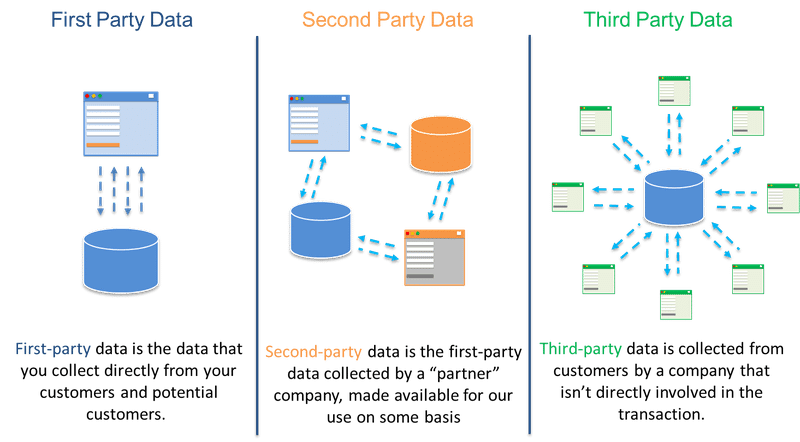
First-party vs. third-party data
- Data source: 3rd-party data is collected from several websites and then aggregated, categorized, and sold to businesses for their own advertising purposes.
- Data reliability: Data from other parties is purchased and sold programmatically, implying it happens quickly and on a huge scale. You don’t know the source in most cases, so its reliability is often questioned.
- Ability to target: Third-party data is publicly available, and many companies can access it. This means that it was created to suit the needs of various companies. With this in mind, you can’t expect to conduct precise targeting using third-party data.
Examples: Let’s say you want to sell your products to UK ex-pats in Germany. For this purpose, you could find a data company in Germany that can sell you the data of individuals with UK nationality living in Germany.
Why is first-party data important?
Spending money on third-party data has been a regular activity among marketers during the past years. However, many have realized that this doesn’t always bring the best results.
If you want to target customers more precisely and generate higher returns, you should focus on first-party data. More importantly, first-party data refers solely to your product because you collect it across customer interactions with your product.
When using data that someone else has collected for their product or purposes, you can’t apply it 100% to your product and your use cases.
And finally, probably the latest fears of creators being banned from social media and losing all their followers is becoming a real risk.
That is why the need to use data aggregators and implement data strategies is gaining popularity so that brands can gather data in a cost-effective way detached from the data dependencies of other platforms.
It’s also the only data that provides the knowledge and power you’ll need to identify, associate with, build direct relationships and answer your consumers in relevant ways.
Benefits of using first-party data
Next, we’ll discuss some of the advantages of using first-party data for your company.
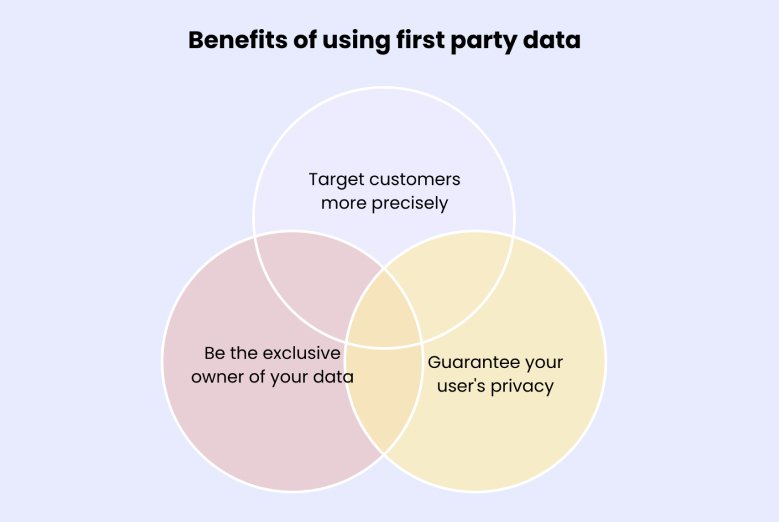
Because it originates directly from how a brand’s audience interacts with its products and services, first-party data is highly accurate, dependable, and valuable. They may link customer needs, habits, and motivations to their actual behavior. For instance, they could see how a well-known marketing campaign resulted in significant brand recognition and revenue improvements.
Increases in website traffic might result from a successful email campaign with tailored taglines. This helps brands determine what performed, what didn’t, and why. This way, they can make better business decisions for the company.
One of the popular ways to use customer data is to create lookalike audiences in Facebook Ads Manager. By doing this, you are able to create very targeted advertising with digital ads aimed at your brand’s custom segments. It is a programmatic approach of using first-party data to create ads and reach a broad audience with potential customers.
Be the exclusive owner of your data
Companies with first-party data have total ownership and management over their customers’ information. They can collect, organize, and use first-party data without considering external effects or constraints.
When getting data from other sources, other firms decide what information to acquire and how to offer it, which might reduce its efficacy.
They could, for example, concentrate on acquiring certain client categories or specific types of data that are unrelated to a brand’s objectives.
First-party data has no different viewpoints that may influence how marketers use it in their tactics. Brands also don’t have to be concerned about other firms having access to the same data, providing them a strategic advantage.
Guarantee your users’ privacy
One of the most challenging aspects of second-and third-party data is its uncertain origins. This puts businesses in danger of violating data privacy rules.
Getting data from other firms might be risky since marketers have no idea how it was gathered or if it was done with the consumers’ awareness.
In contrast, first-party data complies with data protection laws such as the General Data Protection Regulation (GDPR) and the California Consumer Privacy Act (CCPA). Businesses that gather and use first-party data adhere to essential values such as openness, confidentiality, and responsibility.
This considerably decreases their possibilities of encountering legal concerns and being subjected to harsh penalties. Companies can be confident about where their information comes from, how it was gathered, and if it can be utilized.
Users are also at ease with the information they submit, who it is provided to, and how it is processed.
5 ways to collect first-party data
Web request forms
Inviting users to request a quote or submit a form for service inquiry on your website is the most basic way of collecting first-party data. Including these forms is a simple method to develop a database of perfect customer profiles. The best part is, it takes a few seconds!
This type of first-party data collection shouldn’t take up a lot of your time and resources. You just need a landing page and a small form where you’ll collect basic info such as name and email, or only email.
You could offer a discount or another perk for new users to make it more attractive.
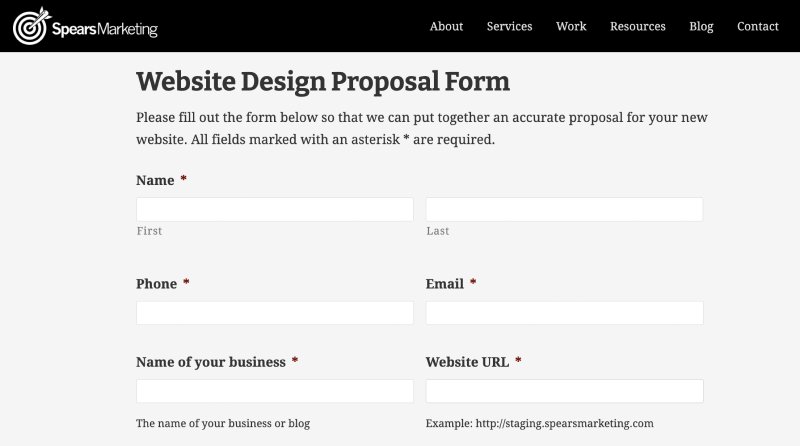
Newsletters or eBooks
Another way to collect emails is to invite visitors to subscribe to your newsletter or download an ebook. Make sure you offer valuable content that doesn’t end up in spam. For example, see Hubspot’s first party data strategy. They use ebooks for progressive profiling, meaning they qualify people based on their audience segments so they can further process them within their sales pipelines.
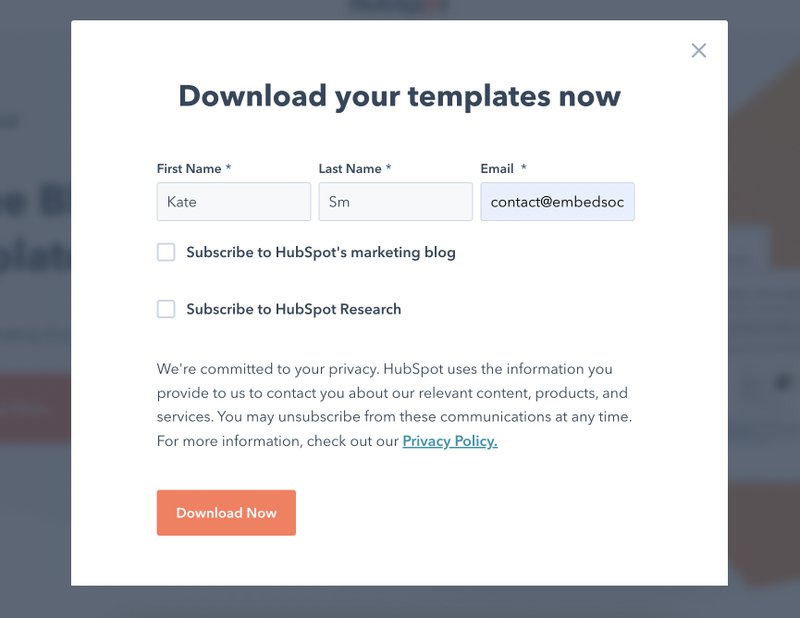
Google or Facebook sign in
Users love signing in with their Google or Facebook accounts. For them, this eliminates the entire registration process and makes things quick and painless.
Although these services are third-party, still if you use their API documentation and the user provides permissions to their profiles in order to log in to your service, then it is a first-party source of data.. You’ll get access to essential data about them, such as social URL, name, interests, and geolocation.
Usually, more sophisticated apps like EmbedFeed with API integrations can help to collect more user data from their social media accounts. But this is gathered with an app permission window, where the user still needs to approve that the app can collect data from their social profile.
Analytics tools
You can use many analytics tools to collect first-party data from your users.
The most convenient way is to set up event tracking and follow the user journey across different interactions with your website or app.
This will help you create a behavioral picture of your users. You’ll be able to find out how they perceive your product, their interests, preferences, and more. You’ll also discover some flaws of your product interface and get ideas on how to improve it.
Here are some tools you can use to collect behavioral insights about your customers:
Customer surveys and forms
If customers like your product, they’ll be happy to answer a few questions and talk about their experience. On the other hand, if they don’t like your product, they’ll be searching for an opportunity to express their dissatisfaction.
To connect with the consumer and acquire first-party data, conduct a short survey or poll in exchange for a reward or discount. They will be happy to know that you care for their opinion and want to improve your product for them.
EmbedForms is one of the tools you can use to collect customer opinions. Browse our pre-built widget templates to find out the best way to collect first-party data from your users.
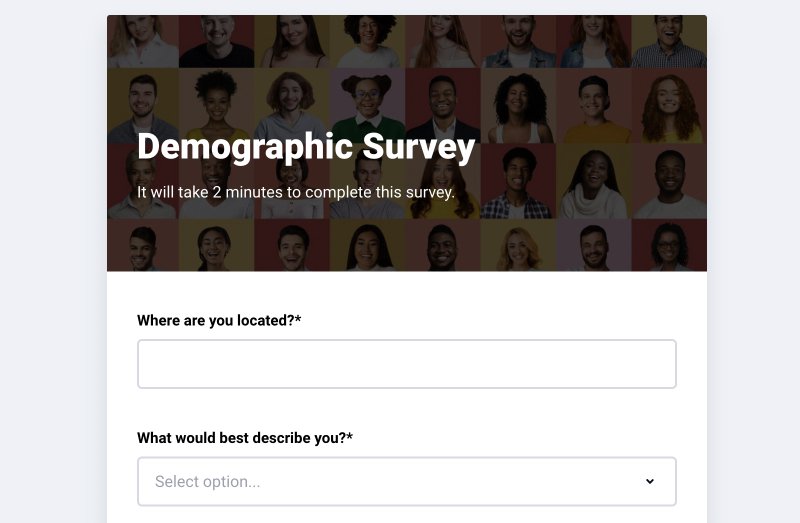
Examples of how you can use first-party data
These examples demonstrate how and where businesses may obtain first-party data. Use them to plan how you begin collecting high-quality data from customers who have agreed to provide it.
Create personalized experiences
Personalization entails much more than simply displaying a customer’s first name on a website or in an email. First-party data contains what goods a consumer has already bought from you, allowing you to present related items or emphasize other offers related to that particular customer’s behavior.
Netflix shows you these suggestions based on what you’ve watched. They collect first-party data to offer you entertainment based on your preferences. For example, when you open Netflix’s home page, you see a personalized interface.
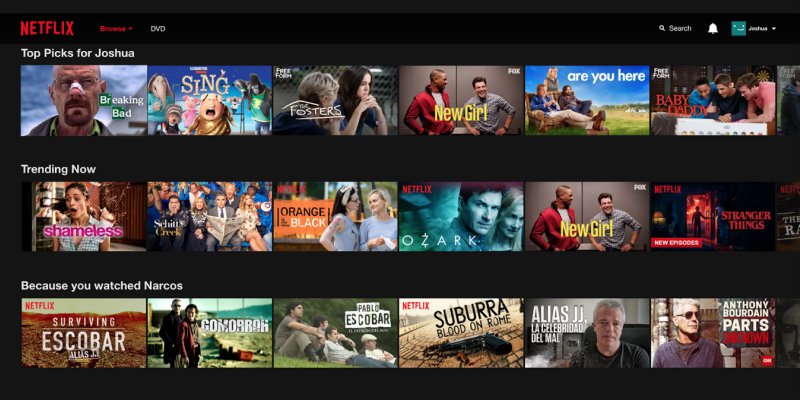
YouTube also shows you content in a similar way.
Target more accurately with your ad campaigns
Many advertisements rely on third-party data. However, you can provide more precise ads throughout your advertising platforms using first-party data.
The most common way is retargeting. You can show customized ads to people already on your website or who purchased certain products with retargeting ads.
Another example is to create custom audiences on Facebook or other platforms with the demographic or behavioral data you’ve collected from your users.
Here is an example from a retargeting campaign by Samsung using dynamic ads to target people who have previously taken action on the brand’s website. To do this they need to add a Facebook pixel on their website in order to get visitors’ data and create custom audiences in the Facebook manager when creating the ads.
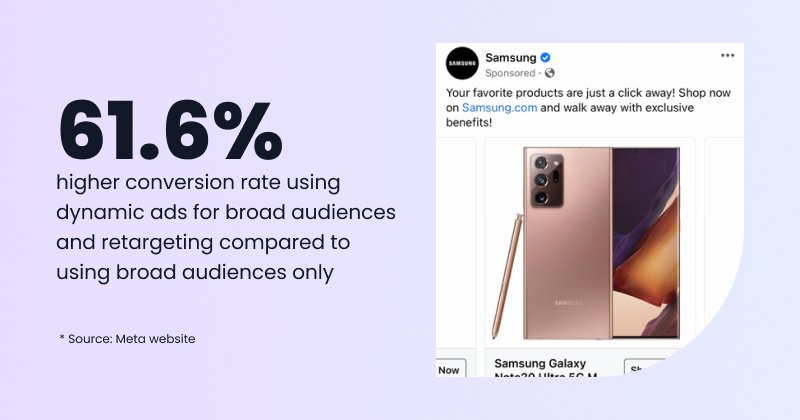
Predict the customer journey
Marketers may trace the customer journey by combining and collecting first-party data from a single customer identification resource, uncovering the many stages that customers take on their road to the sale, as well as the sequence in which they complete them.
As a result, marketers can provide the correct message at best possible time, driving tactics to re-engage customers during their buying process.
Moreover, first-party data insights can be used to affect channel choices and spending. Understanding how each stage of the customer experience influences conversion allows for a more precise analysis of attribution and a better understanding of how budget fluctuations affect both online engagement and physical store sales.
The future with zero-party data
While first-party data is the data type that you get directly from customers,
You can use zero-party data to tailor content, generate personalized product recommendations, and customize the experience to match people’s expressed interests.
For example, you can ask a customer who’s signed up for your product what their role is in the company. Let’s say that possible answers include marketing manager, marketing assistant, or intern. Based on this, you can tailor the content you send them and show recommendations specific to their role in the company.
As data becomes more and more sensitive, collecting zero-party data will become essential to building meaningful customer relationships in the future. But in order for this to happen, brands need to have a clear understanding of what they offer to customers so they can share their data. Only 56% of marketers believe their organization offers a clear value exchange in return for customers sharing their data. Something that the other 44% of brands will need to address, quickly.
Key Takeaways
In times of harsh competition, there’s no denying that high-quality data that companies can collect directly from their customers is critical to understanding purchase intentions.
As data rules and customer behavior evolve, the validity and dependability of your brand’s first-party data are more critical than ever.
Companies that don’t maximize the value of their first-party data are missing out on the tremendous potential to increase customer engagement and provide outstanding customer experiences. Having a data strategy and investing in a customer data management platform is something you need to consider seriously.
Remember, attracting new customers is always more expensive than retaining your existing ones. And to understand the behavior, purchase history, and preferences of your current customers, you need high data quality.
It’s already in your hands; you just need to start using it as valuable insights towards success.

